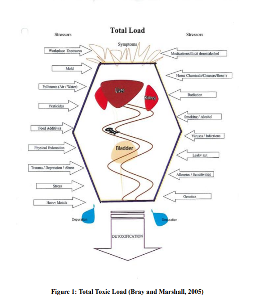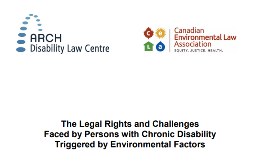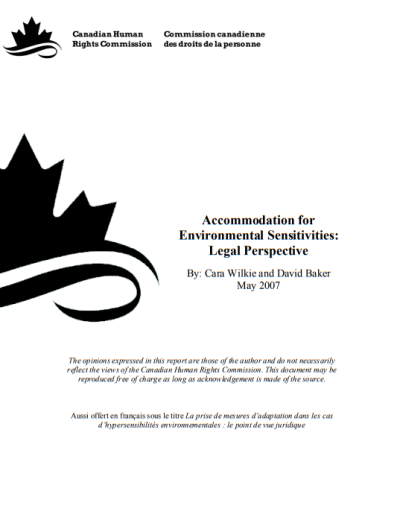Recognized as Disability by Canadian and Ontario Human Rights Commissions






Recognition of EHS as a disability
- Legal precedent: For human rights purposes, a disability is defined by its effects on an individual's life, not by a specific medical diagnosis. The CHRC's policy on environmental sensitivities, first approved in 2007, directs federally regulated employers and service providers to accommodate those who experience debilitating symptoms from environmental triggers, which include EMFs.
- Protection from discrimination: The Canadian Human Rights Act protects individuals with disabilities from discrimination. This law applies in federally regulated settings, such as federal government offices, telecommunications companies, and banks. Similar protection is afforded in provincially regulated contexts under provincial human rights legislation.
- Duty to accommodate: Recognizing EHS as a disability triggers the legal duty for employers and service providers to accommodate an individual's needs up to the point of "undue hardship." Accommodations may include:
- Implementing a scent-free or chemical-free policy.
- Reducing or eliminating electromagnetic field exposure in the workplace.
- Notifying employees of upcoming renovations or work that could create environmental irritants.
Challenges and legal considerations
- Evidence is crucial: As with other environmental sensitivities, individuals must provide sufficient evidence to establish that they have a disability and that the accommodation requested is necessary to address their disability-related needs.
- Scientific versus legal recognition: Human rights tribunals have recognized EHS as a disability even while acknowledging the ongoing debate within the medical and scientific communities regarding its causal link to EMF exposure. The legal standard focuses on the functional limitations of the individual, not the scientific consensus of the condition's cause.
- Case outcomes vary: Legal outcomes can vary significantly depending on the specific circumstances and evidence presented. For example, a 2021 case involving an electro-sensitive teacher in Alberta highlighted the importance of demonstrating the effectiveness of the proposed accommodation, finding that the school board was not required to provide accommodations without sufficient information.
Previous Versions
Canadian Human Rights Commission Policy
404 Error, Page found in Web Archive]
Accommodation for Environmental Sensitivities: Legal Perspective
[PDF] Accommodation for Environmental Sensitivities:Legal PerspectiveBy: Cara Wilkie and David BakerMay 2007
Legal PerspectiveBy: Cara Wilkie and David BakerMay 2007

Editor's note:
According to the authority of Former Professor Curtis Bennett the term "Electrohypersensitivity (EHS)" has been upgraded to "Electrocution at the Subtle Energy Level" as lectured for Continuing Medical Education (CME) credits required for licensure renewal because all matter is affected by Radio Frequency Microwave Radiation. No one is exempt.




Educational and Informational Purposes: All information on this
site and all links that are linked to from StayOnTheTruth.com represent
solely the opinions of their producers.
This
information and links to more information are made available to you as a
resource for your own research and evaluation not as an endorsement.
StayOnTheTruth.com is not
in the business of persuading you or anyone else to believe anything
that that is presented linked to from this site; however, it does
encourage you to use all available resources to form your own judgement
about very important things that affect your life.
Fair Dealing and Fair Use Notice: The material on this site is provided for educational and informational purposes. It may contain copyrighted material the use of which has not always been specifically authorized by the copyright owner. It is being made available in an effort to advance the understanding of scientific, environmental, economic, social justice and human rights issues etc. It is believed that this constitutes a 'fair dealing' or 'fair use' of any such copyrighted material as provided for in copyright law. In accordance with the Fair Dealing or Fair Use intention, the material on this site is distributed without profit to those who have an interest in using the included information for research and educational purposes. If you wish to use copyrighted material from this site for purposes of your own that go beyond 'fair dealing' or 'fair use', you must obtain permission from the copyright owner. The information on this site does not constitute legal or technical advice.
© Copyright 2025. "Stay On The Truth", Dianne Knight. All Rights Reserved.
Landline Telephone
(416) 551-7259
Please Note:
Landline Telephone cannot receive a text message and without any notification if sent.
Mailing Address
Dianne Knight, B.A.
18-3555 Don Mills Rd.
Suite 157
North York, Ontario, Canada
M2H 3N3